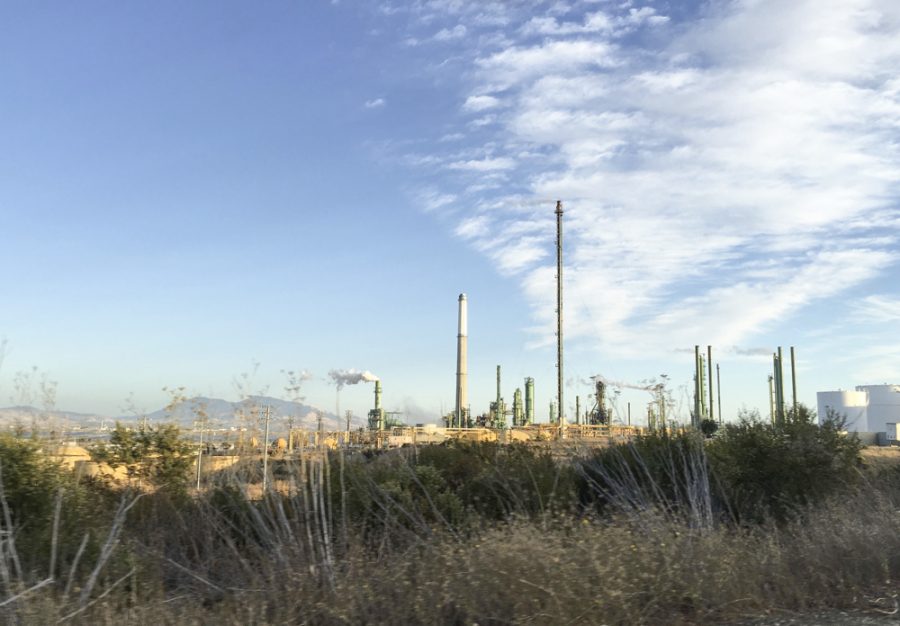Valero reaches hazardous waste settlement
October 19, 2016
The Valero oil refining company is in the hot seat.
A settlement for improper hazardous waste reporting and handling will require the refinery’s Benicia facility to pay a $157,800 fine and improve its piping operations, the U.S. Environmental Protection Agency announced in an Oct. 5 news release.
A May 2014 inspection by the EPA revealed 14 incidences where excessive amounts of benzene, a known carcinogen found in plastic, rubber and pesticides, were illegally dumped in an unlined stormwater retention pond from 2011 to 2013, EPA spokeswoman Michele Huitric told the Pioneer.
The inspection was carried out in accordance with the Resource Conservation and Recovery Act, a federal program that oversees safe management and disposal of hazardous waste. It is enforced by the California Department of Toxic Substances Control, according to Huitric.
Other violations included a failure to alert the public about toxic chemical releases, to determine if solid waste generated at the refinery was hazardous, to operate the facility in a way that would decrease the possibility of an unplanned chemical release and to maintain accurate records, according to Huitric.
According to the Environmental Impact Report supplied by the city of Benicia, their Valero refinery currently produces ten percent of the gasoline used in California, and 25 percent of the gasoline used in the Bay Area. The 900 acre refinery provides approximately 400 jobs, both to Benicia residents and nonresidents, according to Valero.
The refinery operates a wastewater treatment plant that purifies wastewater before it is released into the Suisun Bay, according to an EIR for a Valero improvement project. The stormwater retention pond holds contaminated stormwater and water that often contains hazardous substances like benzene.
Water is directed into a retention pond through underground piping that connects with storm drains. The retention pond water is then diverted to the treatment plant, according to the EIR. The refinery has agreed to modify its piping operations to prevent uncontrolled disposal scenarios, according to Huitric.
Huitric told the Pioneer that an unlined pond is not in compliance with RCRA regulations and isn’t equipped to receive hazardous waste. The water must be treated through the wastewater system before it can be discharged into an unlined pond. Hazardous waste containing benzene can only be discharged into a unit permitted by the RCRA, according to Huitric.
Benzene is known to cause cancer in humans. In situations where it’s disposal is unplanned and unregulated, it could affect people and wildlife living nearby, according to Huitric.
“As the hazardous waste level of benzene wastewater was released into the unlined pond, which is located adjacent to the Suisun Bay, there is greater potential of release of benzene into the groundwater and nearby surface water,” said Huitric.
She added that the contamination could accumulate in the systems of birds and other wildlife and potentially have a negative impact on their health.
Huitric confirmed that the levels of concentration of benzene discovered in the wastewater all varied but exceeded the acceptable hazardous waste level, 0.5 parts per million.
Lillian Riojas, director of media relations and communication at the Valero headquarters in San Antonio, Texas, said the settlement was driven by problems the refinery experienced on “a handful of occasions during some extreme weather events that occurred a number of years ago,” pertaining to the benzene levels found in the stormwater ponds.
In addition to the fine and piping modifications, Valero is required to correct and resubmit toxic chemical reports, provide data to the EPA that proves that no more benzene will enter the pond and submit a work plan for the new piping project by the end of the year, to be completed by June 2017, according to Huitric.
The agreement outlines how the refinery will improve its “ability to handle extreme rainfall events in the future,” Riojas clarified.
Huitric said that the disposal of benzene waste into stormwater ponds is more likely to occur under “an extreme wet weather condition where the wastewater flow is near or exceeds the designed capacity of the refinery’s wastewater treatment system.”
The work plan is expected to prevent approximately 5,000 pounds of benzene from being released into the environment over the next decade, according to the EPA.
Riojas also said that the company has resolved some software issues that resulted in discrepancies in its Toxic Release Inventory reporting, most of which actually resulted in overreporting rather than underreporting.
Settlements between the EPA and refineries aren’t an uncommon occurrence. The EPA reported in 2006 that national settlements brought in over $240 million in environmental improvements and close to $2 million in fines from the Conoco Phillips refineries in Carson, Wilmington, Rodeo and Arroyo Grande; Valero in Benicia and Wilmington and Exxon-Mobil in Torrance.
Huitric clarified that settlements are different from lawsuits because they are handled at the administration level rather than in the federal court system.
In Aug. 2015 the Tesoro Golden Eagle Refinery in Martinez was fined $4 million for disposing waste fluids that contained propane and butane into the on-site water treatment facility, violating air pollution regulations, ABC7 News reports.
A 2015 fiscal year report reveals that companies invested $7 billion in actions and equipment toward contamination cleanup and pollution efforts, $404 million in combined federal, civil penalties and criminal fines and $39 million for environmental mitigation projects, according to the EPA.
Huitric said the EPA commonly focus many of their investigations on waste management practices in refineries and other large facilities, which occur unscheduled and at least once every five years.

















